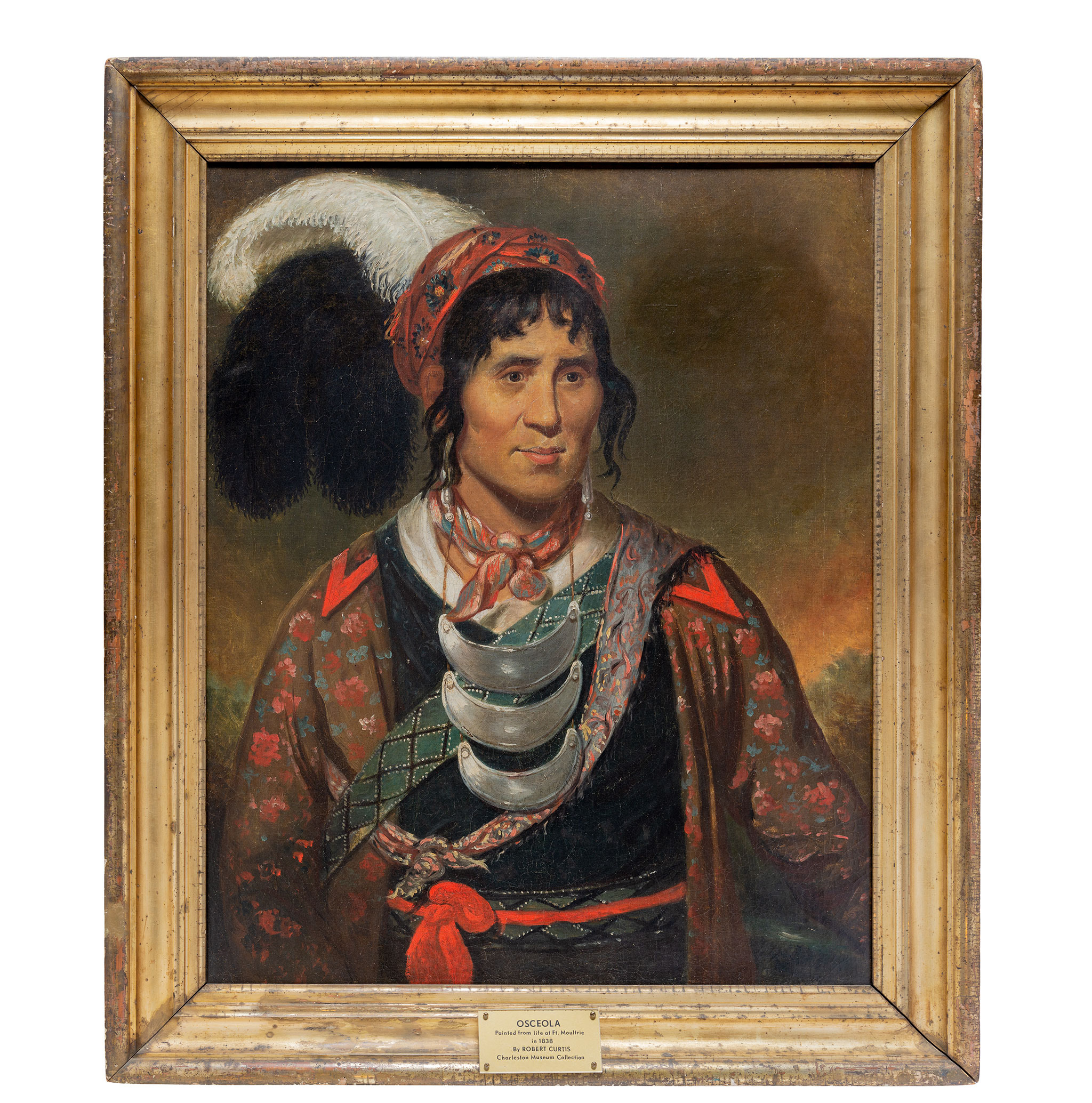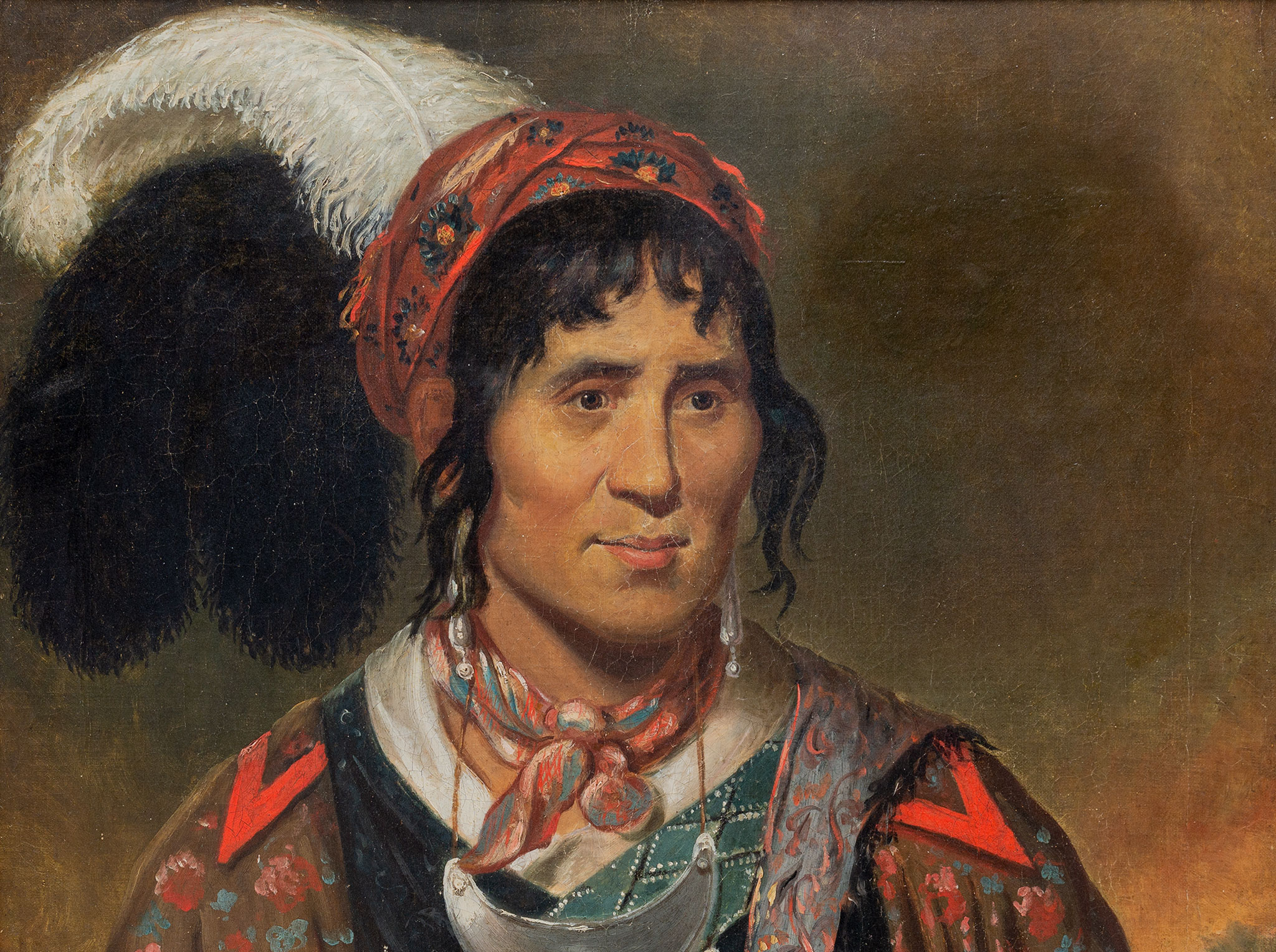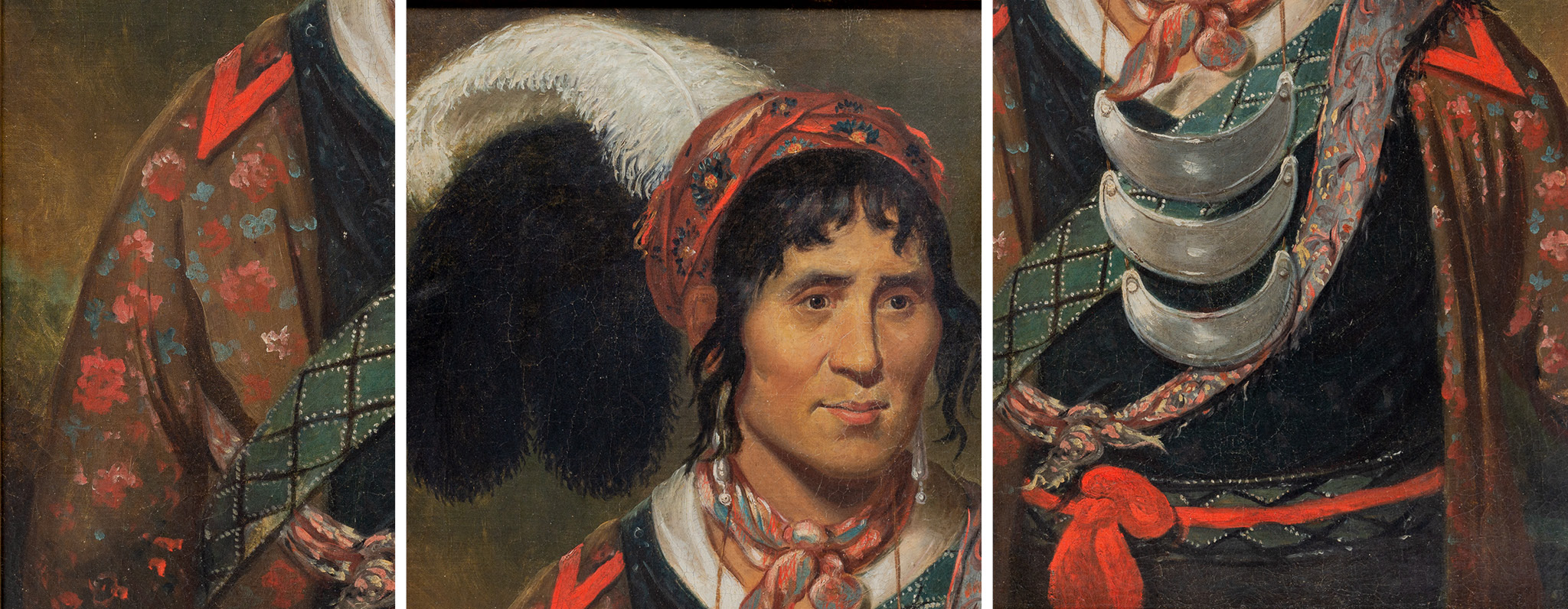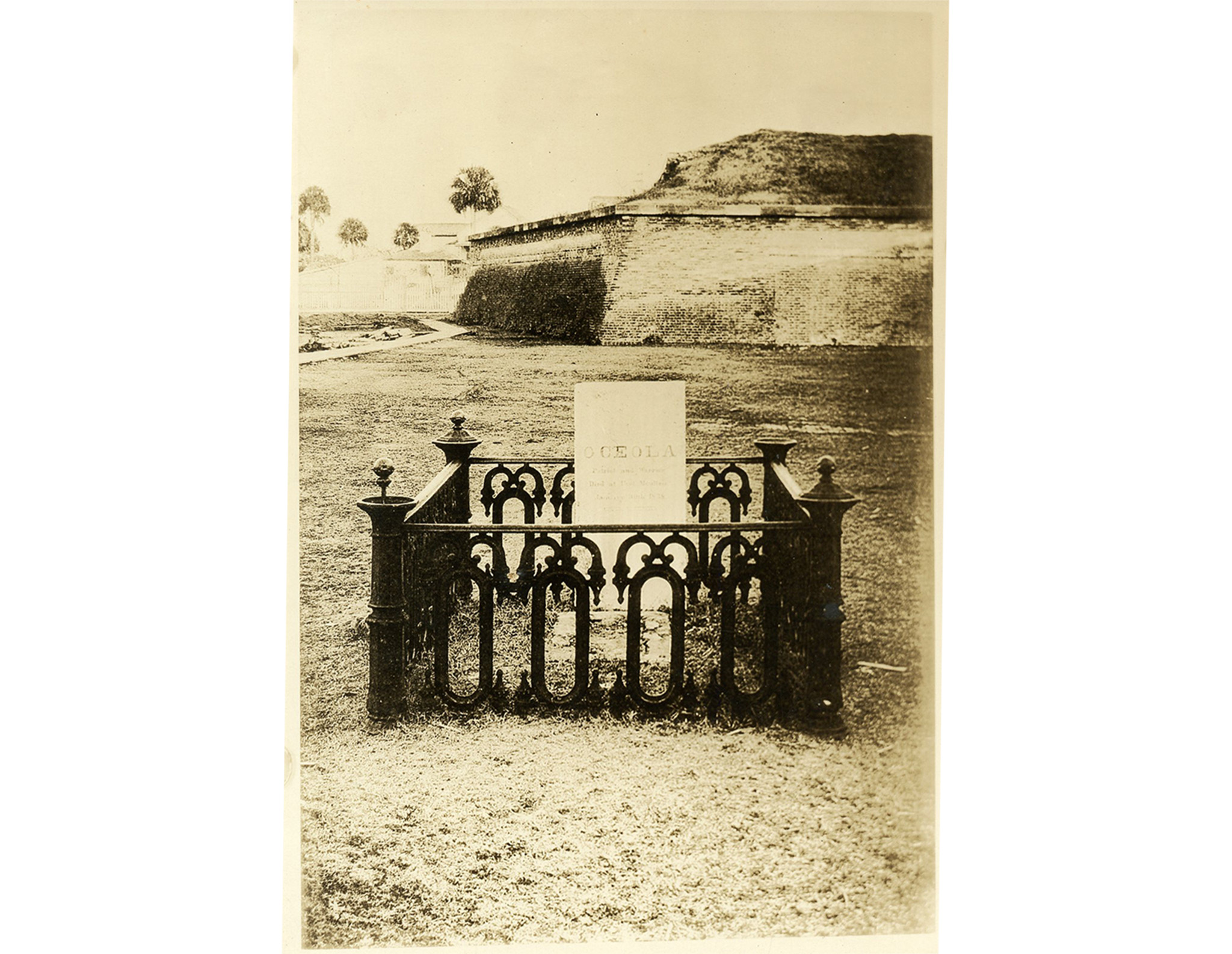Captive Sitter: Osceola at Fort Moultrie
Portraits are powerful objects. In addition to forming a visual record of an individual’s likeness, they frequently provide a glimpse into the sitter’s social status, aspirations, material wealth, and the context in which they lived out their lives. They not only represent reality, but often what the artist or sitter wanted that reality to be.
The Museum’s collection includes portraits of many figures in some way related to the history of the South Carolina Lowcountry. Being expensive and time-consuming to produce, most early portraits showcased wealthy and elite members of society, making those featuring the underrepresented populations, such as Black or Native American sitters, rare. However, one example on exhibit in the Museum’s permanent galleries stands out: Osceola by Robert John Curtis (1816-1867).
 Osceola, 1838, by Robert John Curtis (1816-1867)
Osceola, 1838, by Robert John Curtis (1816-1867)
Painted in 1838, the portrait depicts the influential Seminole leader, Osceola (1804-1838) during his captivity at Fort Moultrie near Charleston. At the time he sat for the portrait, Osceola, who shared both Native American and European ancestry, was being held prisoner in response to his leadership in the Second Seminole War. When presented with the option of surrendering their lands to white settlers, Osceola and several dozen followers opted to continue the war instead of agreeing to the terms of an agreement with the United States that would have seen the Seminole people expelled from Florida and sent to “Indian lands” in the quickly expanding American West.
On October 21, 1837 Osceola’s group had approached Fort Peyton in Florida under a white flag of truce in order to engage in peace negotiations with American officials. However, no negotiations took place. Instead, the Seminole representatives were captured and briefly imprisoned near St. Augustine before being transferred north to Fort Moultrie on Sullivans Island near Charleston.
The Seminole prisoner fascinated the public who flocked to see the legendary figure in person; this group included at least three portraitists, Robert John Curtis among them. In a departure from most contemporary portraiture, the figure that looks out from Curtis’s canvas is not white or free. Instead, the subject exhibits the characteristics of a complex man of multi-cultural heritage wearing both traditional native dress and western adornments. In this way Curtis’s Osceola offers a glimpse into a volatile time in American history where cultures both mixed, and creolized, while also struggling against each other.
Curtis depicted Osceola wearing a mixture of both western and native dress. The manufactured printed floral cotton fabric, turban, and imported ostrich feathers clearly speak to an individual with access to western markets for goods and style influemce. However, the wampum belt and indigenous way the entire ensemble is styled clearly speak to a native heritage. What may at first glance appear to be a typical portrait of a Native American figure proves much more complex upon closer examination.
Within three months of his initial capture, Osceola succumbed to a growing list of medical ailments including years-long chronic malaria, tonsillitis, and an abscess; he died on January 30, 1838. His expressed final wishes included a desire to have his body returned to his native homeland in Florida. That request was not honored and in a continuation of the public fascination with the Seminole leader, his body was ignobly decapitated before burial at Fort Moultrie.
The portrait of Osceola created by Curtis in 1838 not only captures the likeness of one native American leader, but served as a prototype for American depictions of native people more generally. It is an artifact with America’s painful and complicated struggle with justice, freedom, and its larger cultural identity in the nineteenth century.




